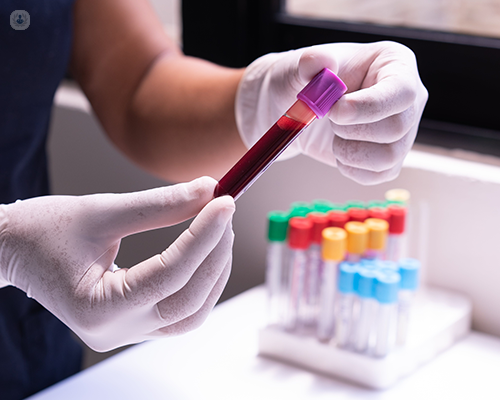Lyme disease tests
What is analysed?
Lyme disease is a bacterial infection caused by the spirochete bacterium Borrelia burgdorferi. It is primarily transmitted to humans through the bite of infected black-legged ticks, also known as deer ticks, which are commonly found in wooded or grassy areas.
Lyme disease tests analyse blood for the presence of antibodies to the Lyme disease bacterium. The presence of these antibodies indicates infection with the Borrelia burgdorferi bacterium. It typically takes two to three weeks for the body to produce detectable levels of antibodies against Borrelia burgdorferi.

What does the result mean?
The result shows the presence or absence of Borrelia burgdorferi antibodies, which indicates whether the patient has a current or past infection, or no evidence of an infection.
Why conduct the analysis?
Lyme disease tests are conducted to confirm or rule out exposure to the Borrelia burgdorferi bacterium that causes Lyme disease.
When to conduct the analysis?
Lyme disease tests are conducted when symptoms of Lyme disease are observed, especially if they develop several weeks following an inconspicuous bite from a small tick, or if you have recently visited woodland or tall grassy areas.
What sample is required?
A blood sample is required. The blood is drawn by needle from a vein in the arm.
In some cases, samples of cerebrospinal fluid or synovial fluid may be taken. Rarely, a skin biopsy may also be taken from a rash in the body, depending on the clinical presentation.
Is any prior preparation necessary?
No prior preparation is necessary.
How is it performed?
Lyme disease tests can be performed using several methods, including:
- Enzyme-linked immunosorbent assay (ELISA) and Western blot tests to detect antibodies against Borrelia burgdorferi in the blood.
- Polymerase chain reaction (PCR) tests to detect bacterial DNA in blood, CSF, or other body fluids.
- Culture tests to directly grow and identify the bacterium from a clinical specimen.
What are the normal values?
There are no specific "normal" values for Lyme disease tests. Interpretation of results depends on the specific test used and the clinical context. However, negative results are generally considered normal if there are no symptoms of Lyme disease or recent exposure to the bacterium.
What does having altered values mean?
- Positive test results: Indicate the presence of antibodies against Borrelia burgdorferi, suggesting exposure to the bacterium and possible Lyme disease infection. Further evaluation and treatment may be warranted.
- Negative test results: Indicate the absence of detectable antibodies or DNA at the time of testing. However, early-stage Lyme disease may not always produce detectable antibodies, leading to false-negative results. Repeat testing may be necessary if symptoms persist or worsen.